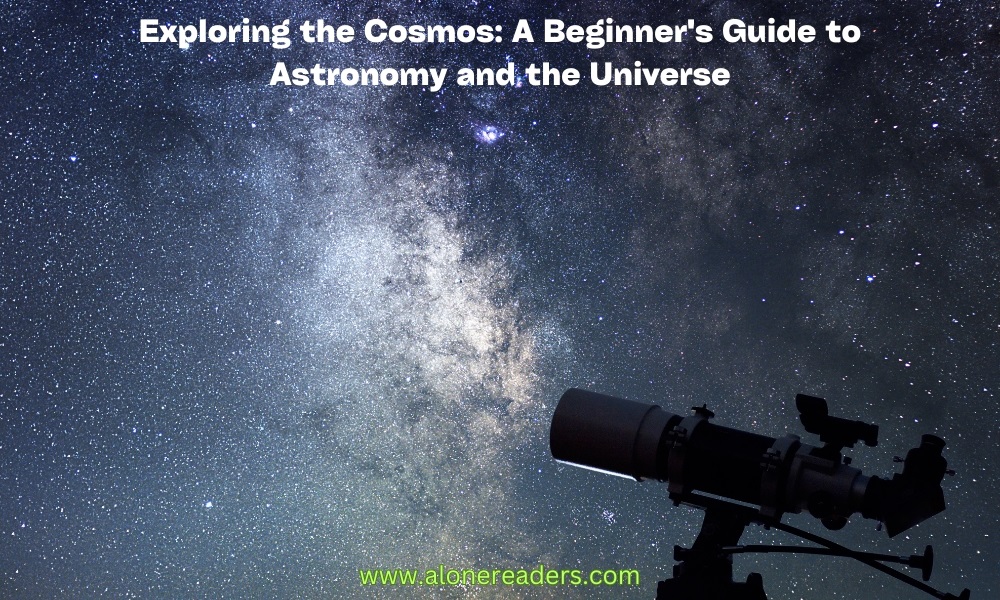
Astronomy, the scientific study of celestial objects and phenomena, has fascinated humanity for millennia. The night sky, with its stars, planets, and galaxies, offers a window into the vast and complex universe we inhabit. This beginner’s guide to astronomy aims to unravel some of the mysteries of the cosmos, making it more accessible to those who wish to start their journey through the stars.
The universe is a vast expanse that includes everything we know – from the smallest subatomic particles to the largest galaxies. It is believed to have begun approximately 13.8 billion years ago with the Big Bang, an event that saw the universe expand from a hot, dense state. Since then, it has been continuously expanding, a fact evidenced by the redshift observed in the light from distant galaxies.
At the heart of understanding the universe is the study of light, or more specifically, electromagnetic radiation. Telescopes, the primary tool of astronomers, gather light from celestial objects. This can be not only visible light but also other forms of electromagnetic radiation such as radio waves, X-rays, and infrared. Each type of light can provide unique information about distant stars, planets, and galaxies.
Stars, the most widely recognized celestial objects, are immense balls of gas, primarily hydrogen and helium, undergoing nuclear fusion. Our own sun is a star, and it's an average-sized one at that. Stars come in various sizes and colors, indicating their temperature, age, and chemical composition. The lifecycle of a star is fascinating, beginning in a nebula, a giant cloud of gas and dust, and potentially ending as a white dwarf, neutron star, or even a black hole, depending on its mass.
Planets, on the other hand, are bodies that orbit stars. In our solar system, we have eight planets, but there are thousands of exoplanets (planets outside our solar system) discovered in other parts of the galaxy. These planets can be vastly different from those in our solar system, offering insight into the diversity of planetary systems.
Galaxies are immense collections of stars, gas, dust, and dark matter, bound together by gravity. Our galaxy, the Milky Way, is just one of billions in the observable universe. Galaxies can be spiral-shaped like ours, elliptical, or irregular in shape. The study of galaxies helps astronomers understand the large-scale structure of the universe and the processes that govern the birth and death of stars.
The concept of dark matter and dark energy are two of the most intriguing aspects of modern astronomy. Dark matter, which does not emit or absorb light, is thought to make up about 27% of the universe. Its presence is inferred from its gravitational effects on visible matter, radiation, and the large-scale structure of the universe. Dark energy, even more mysterious, is believed to be responsible for the accelerated expansion of the universe and constitutes approximately 68% of it.
Understanding the scale of the universe can be challenging. Distances in space are so vast that astronomers use light-years, the distance light travels in one year, as a unit of measurement. For example, the nearest star to Earth, Proxima Centauri, is about 4.24 light-years away. This means that the light we see from it today started its journey more than four years ago.
The study of the universe also involves understanding celestial phenomena such as eclipses, comets, and meteor showers. Eclipses occur when the Sun, Earth, and Moon align, resulting in the Sun or the Moon being obscured. Comets, often described as “dirty snowballs,” are chunks of ice and rock that develop spectacular tails as they approach the Sun. Meteor showers happen when the Earth passes through the debris left by a comet, causing streaks of light in the night sky as particles burn up in our atmosphere.
Amateur astronomy is a rewarding hobby that is accessible to everyone. With just a simple telescope or even binoculars, you can begin to explore the moon's craters, the rings of Saturn, or the moons of Jupiter. There are also many astronomy clubs and online communities where beginners can learn from more experienced stargazers.
In conclusion, the study of astronomy opens up a universe of wonder and discovery. It reminds us of our small place in the vast cosmos and encourages us to ask big questions about the nature of existence, the origins of the universe, and our place within it. Whether you’re gazing at the stars with a telescope, watching a meteor shower, or simply reading about the latest astronomical discoveries, the study of the cosmos is a journey that is both humbling and exhilarating.